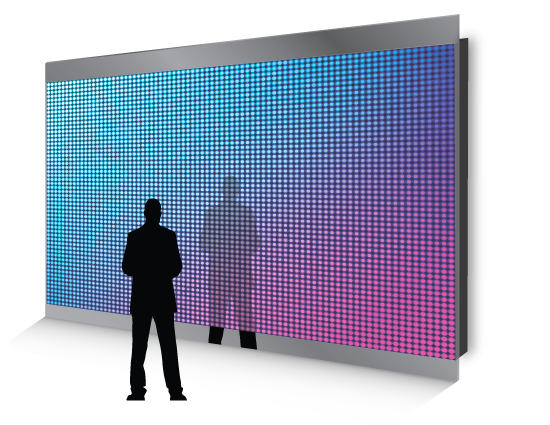Exploring the Wide-ranging Connectivity Solutions Offered for LED Display Panels
Exploring the Wide-ranging Connectivity Solutions Offered for LED Display Panels
Blog Article
LED display units have gained popularity for their ability to deliver high-quality imagery in multiple settings, from corporate environments to event venues. One of the most significant aspects of these systems is their interface capabilities, which allow users to connect them to multiple devices and systems. Comprehending the diverse input options available for LED wall panels is essential for maximizing their use and effectiveness. This article explores these options, highlighting how they can adapt to various needs and preferences.
One common interface method for LED wall panels is High-Definition Multimedia Interface. HDMI is broadly known for transmitting crisp video and audio signals between devices. This interface type is especially useful in business environments, such as conference rooms or classrooms, where visual content or video content are often displayed. By using digital connectors, users can easily connect laptops, projectors, and streaming equipment to LED wall panels, ensuring a sharp and dynamic display of information.
Another commonly used interface option is Display Port, which is similar to HDMI but offers enhanced benefits. Display Port can support higher refresh rates and resolutions, making it an ideal choice for interactive media or graphic-intensive applications. For those using LED wall panels in environments where performance is critical, such as competitive gaming venues or creative workspaces, DisplayPort can provide the necessary visual quality. Moreover, many contemporary computers and graphics cards include Display Port connections, making it a convenient solution for tech-savvy users.
In contrast to High-Definition link Multimedia Interface and DisplayPort, wireless transmission methods are becoming progressively prevalent in LED wall panel technology. Cable-free interfaces allow operators to share content without the need for physical cables, promoting a cleaner and more adaptable configuration. Platforms such as wireless internet and Bluetooth enable users to link smartphones, tablets, and laptops directly to Luminescent Diode wall panels without cumbersome wires. This versatility is particularly advantageous in fast-paced settings like trade shows or events, where quick adjustments to displays are often required.
For larger installations or more complex configurations, LAN integration through wired networking is another reliable solution. Ethernet connections provide a stable and reliable way to connect multiple Light Emitting Diode wall panels within a network. This setup is suitable for electronic display applications found in shopping malls or airports, where numerous panels may need to display synchronized content across a wide area. By using network cabling and routing hardware, operators can ensure that all connected panels receive consistent updates and content efficiently.
Finally, it's important to consider the future of connectivity with technologies such as USB-C and Thunderbolt 3. These newer connection types offer enhanced data transfer rates and flexibility by allowing one connector to handle both energy transfer and data exchange. As click site more systems incorporate these protocols, Light Emitting Diode wall panels equipped with Type-C ports will likely become more prevalent. This shift in integration not only improves the capabilities of LED wall panels but also aligns with the growing trend of minimalism in technology setups by reducing the number of cables needed.
In conclusion, exploring the broad interface options available for LED wall panels reveals many possibilities for users across various fields. From traditional approaches like High-Definition Multimedia Interface and Display Port to contemporary cordless technologies and LAN setups, each pathway serves unique functions tailored to specific needs. Additionally, emerging technologies like USB-C promise further advancements in how professionals utilize Luminescent Diode wall panels. By understanding these connectivity choices, individuals can make informed decisions that optimize their overall engagement with these multifunctional visual solutions.